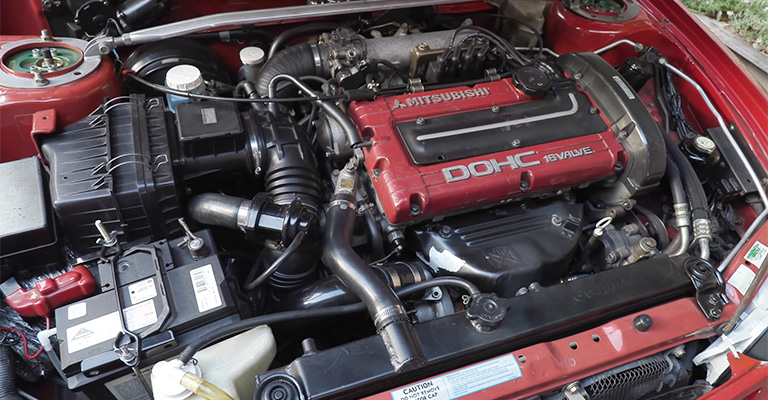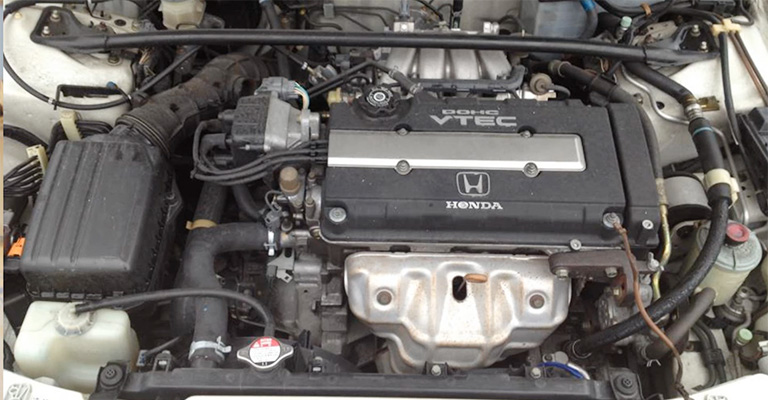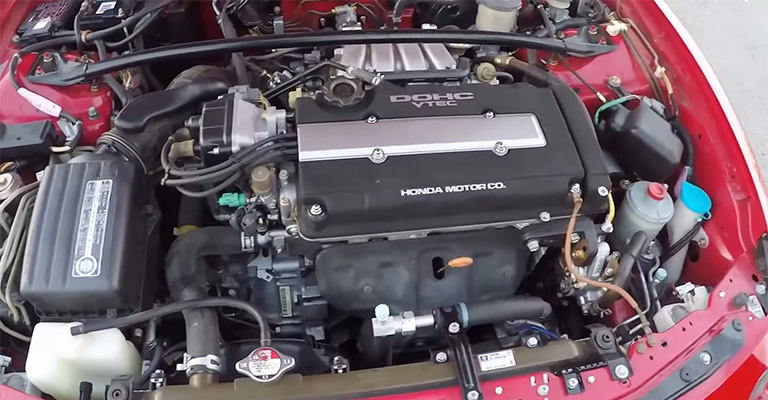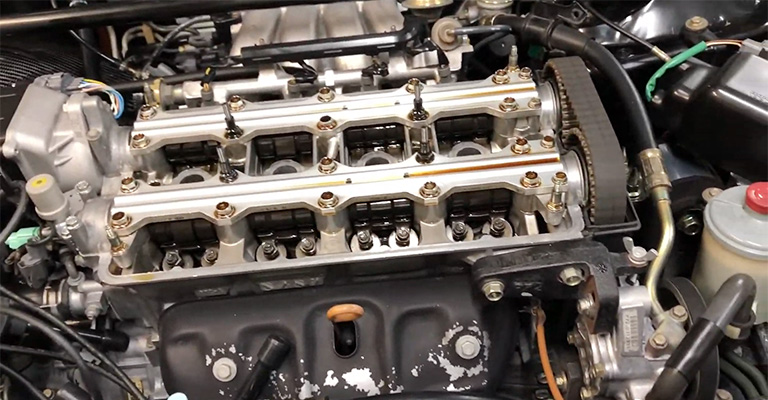The Acura Integra is a sports vehicle produced by Honda Motors. It is a front-wheel-drive vehicle available in sedan and hatchback body styles. The Integra came with two different variants; the GSR and LS.
What does GSR stand for Integra? The name “Grand Sport Racing” engine refers to a specific model of engine used in Honda’s small sports vehicle, the Integra.
The GSR was explicitly designed for high performance and was used in many Integra variants. The Integra Type R, for example, was known for its superb acceleration and handling.
We will discuss the several Integra revisions powered by the GSR engine, as well as the advantages and disadvantages of the GSR engine.

The Honda Integra’s History
Before we go into the specifics of the GSR engine, you must first understand the history of the Honda Integra. The Integra, which was subcompact in size, made its market debut in 1986. This was a vehicle that could be purchased as a hatchback with three doors or a sedan with four doors.
It was designed to be a simple vehicle, efficient on gas, and enjoyable to drive. Integra has undergone numerous revisions and additions during its manufacturing run. In 1994, Honda launched the Integra Type R, a high-performance derivative of the vehicle.
This model of the Integra included several performance-enhancing features, such as a more powerful engine, sport-tuned suspension, and improved aerodynamics.
The GSR Engine

The introduction of the GSR engine considerably improved Integra Type R’s performance capabilities. This engine had a displacement of 1.8 liters and an inline four-cylinder arrangement; it was designed specifically for high performance.
Thus, it had a variety of design characteristics that contributed to its increased power output and efficiency. VTEC (Variable Valve Timing and Lift Electronic Control) technology was one of these aspects, allowing the engine to vary its valve timing and lift depending on its RPMs.
Accordingly, the GSR engine was built with a high compression ratio, contributing to the vehicle’s overall boost in power output. It was one of the most powerful engines in its class at the time, with a maximum output of 195 horsepower and torque of 130 lb-ft. And it could produce either or both values.
Different Versions Of The Integra With The GSR Engine
The GSR engine was used in the following Integra variants at one point or another:
Integra Type R

The Integra Type R was a high-performance Integra derivative powered by the GSR engine. This model was only available in Japan. This model of the Integra was outfitted with a lot of components that improved its performance.
Among the components are:
- A sport-tuned suspension
- Improved aerodynamics
- A limited-slip differential
Furthermore, it included a manual transmission with six speeds, allowing drivers to make the most of the engine’s capability.
The Acura Integra Type R drew much attention due to its incredible acceleration and handling characteristics. It was one of the most sought-after automobiles ever made and had a respectable amount of weight. That contributes to its performance enhancement.
Integra Type R (DC2)

In Japan and Europe, a version of the Integra known as the Integra Type R (DC2) was available for purchase. It utilized the same GSR engine as the Integra Type R. However, it was distinguished from the other Integra variations by several distinctive design elements included in its construction.
The red Honda insignia on the Integra Type R (DC2) immediately became a recognizable and iconic depiction of the vehicle. This makes it one of its most recognizable features.
It also contained several lightweight components, such as a carbon fiber hood and lightweight alloy wheels, contributing to an increase in overall performance.
Integra RSi (South Africa)
The Integra RSi was a three-door hatchback model that was available in South Africa, equipped with the B18C1 GSR engine.
Integra GS-R

The Integra GS-R was a three-door hatchback or two-door coupe model equipped with the B18C1 GSR engine, available in North America, Europe, and other markets.
Video Explaining The Integra Variants
Here is a video to help you understand the different Integra variants.
What Are The Benefits Of The GSR Engine?
The GSR engine provides numerous advantages to the Honda Integra. These advantages include the following:
Performance
The increased engine output allows for more power and torque, giving the vehicle greater overall acceleration. As a result, the Integra has improved handling and a smoother ride.
Increased Horsepower and Torque
One of the key advantages of the GSR engine was that it produced more horsepower and torque than Integra’s standard engine.
Depending on the type of the GSR engine, it could produce between 170 and 195 horsepower and torque between 128 and 145 lb-ft. As a result, individuals looking for a sportier driving experience should consider the GSR engine.
Versatility
The GSR engine was offered in several trim levels and body designs, including the GS-R, Type R, and RSi. This makes it an excellent alternative for individuals seeking a sporty driving experience in various automobiles.
Fuel Economy
The GSR engine’s upgraded engine architecture and increased efficiency allow for better fuel economy. As a result, the Integra owner saves money at the pump, making it an appealing option for people searching for a more affordable vehicle.
Reliability
The engine is more dependable than the base model engine, and its parts are more durable and long-lasting. This assures that the Integra will continue to run well for many years.
What Are The GSR Engine’s Drawbacks?
While the GSR engine has numerous advantages, it also has significant disadvantages. These disadvantages include the following:
Cost
This is owing to the higher cost of the updated parts and the installation labor required. Because of the higher cost, the GSR engine may be out of reach for some Integra owners.
Emissions
The GSR engine emits more pollutants than the standard model engine. This is owing to the engine’s greater efficiency and power production. Thus, the increased emissions output may be an issue in areas with stringent emissions standards.
Lifespan
The GSR engine has a shorter lifespan than some other engine types. This is due to the increased performance capabilities of the engine, which require more frequent maintenance and repairs. The engine also has a higher rate of wear and tear, which can lead to a reduced lifespan.
Maintenance
As with any engine, the GSR engine may have required more frequent maintenance to keep it running smoothly. This could include regular oil changes, tune-ups, and other routine maintenance procedures.
Depending on the specific vehicle and driving conditions, these maintenance requirements may have been more frequent than other engine options available for the Integra.
Conclusion
So, in conclusion, what does GSR stand for Integra? The Honda Integra’s GSR engine is a popular engine option. It outperforms the base model engine in terms of performance, fuel efficiency, and dependability.
However, it has several disadvantages, such as greater costs and emissions. Nevertheless, the GSR engine is an excellent choice for Integra owners searching for a more performance-orient

Leave a Reply